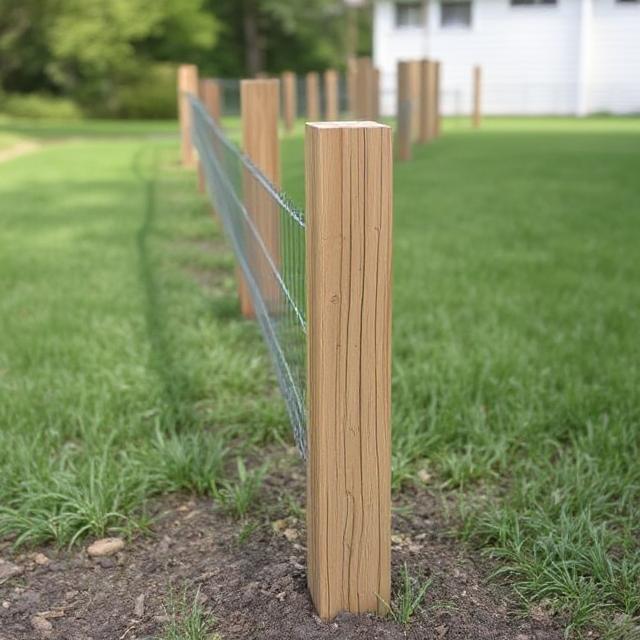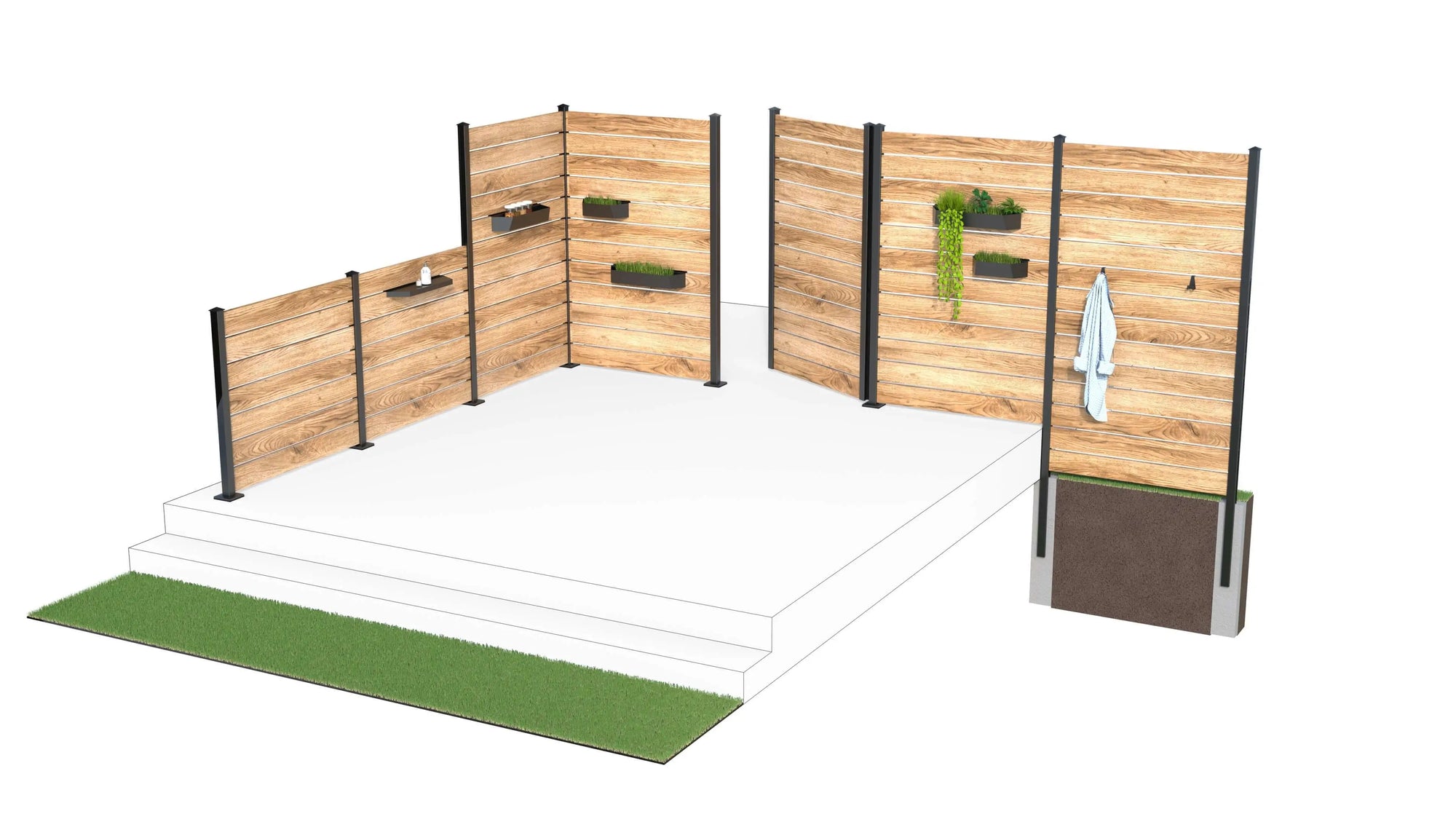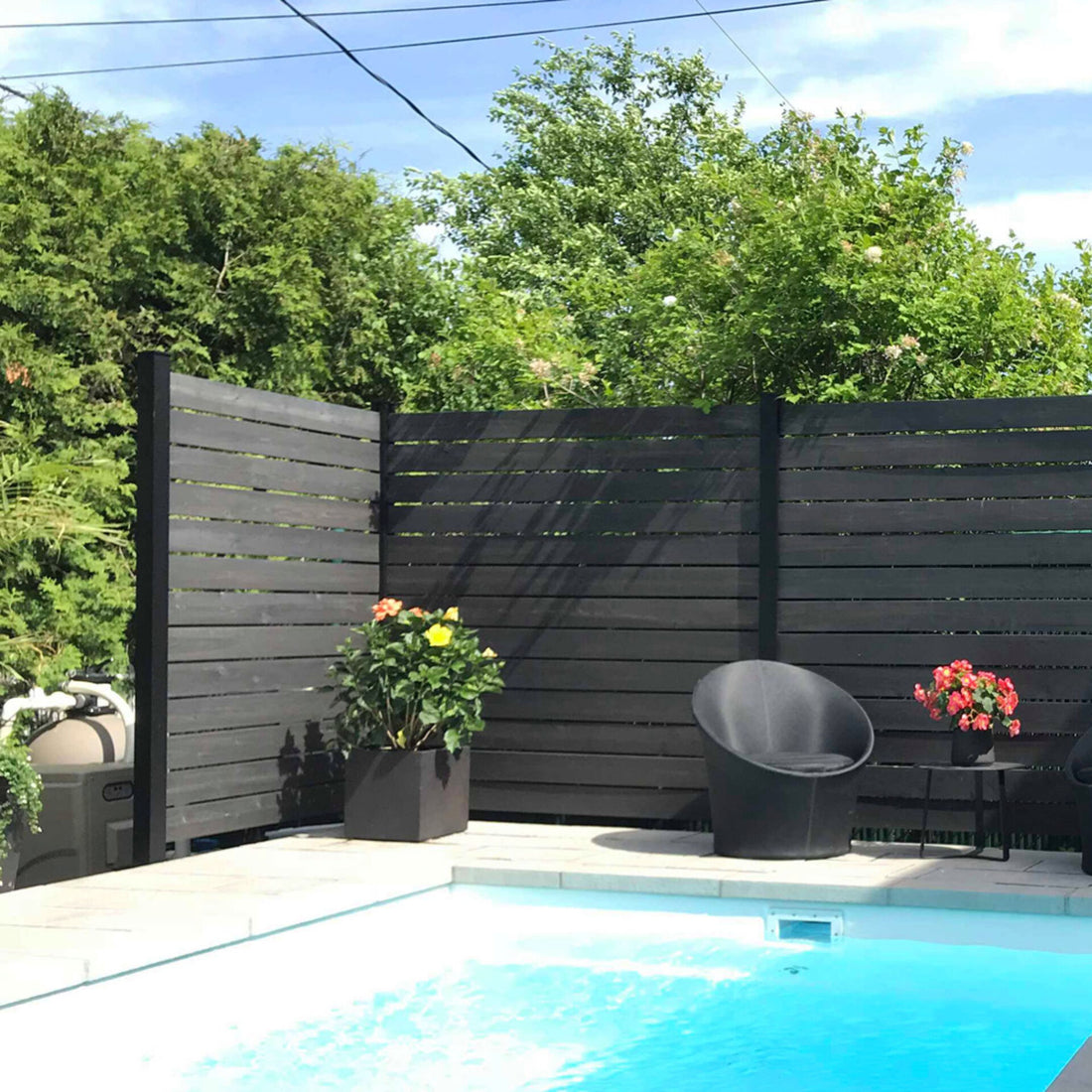
Are Metal Fence Posts Cheaper Than Wood? (2025 Comparison Guide)
Share
When building a fence, one of the first questions homeowners face is whether to choose metal or wood fence posts. While wood has been the traditional option for decades, metal fence posts are quickly becoming the preferred choice for modern homeowners and contractors. But are metal fence posts actually cheaper than wood in the long run? Let’s break down the real costs, durability, and performance differences between these two materials.

This comprehensive guide explores everything you need to know about the cost comparison between metal vs. wood fence posts — including material, installation, maintenance, and lifespan. We’ll also introduce Patavin metal fence post systems, a premium brand offering customizable, elegant, and long-lasting fencing solutions.
Table of Contents
- 1. Introduction to Fence Post Materials
- 2. Cost Comparison: Metal vs Wood Fence Posts
- 3. Factors That Affect Cost Over Time
- 4. Durability and Longevity
- 5. Maintenance Costs and Time
- 6. Patavin Metal Fence Post Systems Overview
- 7. Environmental and Aesthetic Benefits
- 8. Summary Table of Key Differences
- 9. Frequently Asked Questions
- 10. References
1. Introduction to Fence Post Materials
Fence posts are the structural foundation of any fence. They determine the fence’s stability, appearance, and longevity. Traditionally, wood posts were the go-to option because of their affordability and natural look. However, the rise of metal fence posts has transformed modern fencing — providing superior strength and reduced maintenance.
- Wood Fence Posts: Typically made of treated pine, cedar, or redwood. Offer a classic aesthetic but are prone to rot, warping, and termites.
- Metal Fence Posts: Made from galvanized steel or aluminum. Highly resistant to rust, weather damage, and pests, with a modern finish.
2. Cost Comparison: Metal vs Wood Fence Posts
The initial price of a metal fence post is generally higher than a wood post. However, when you consider long-term costs such as maintenance, replacement, and durability, metal often proves to be the more economical choice.
Initial Material Costs (2025 Estimates):
- Wood Posts: $15–$25 per post (pressure-treated pine)
- Metal Posts (Steel or Aluminum): $25–$45 per post
At first glance, wood seems cheaper. But the lifespan of metal posts can exceed 25 years, while wooden posts may last only 7–12 years, especially in wet or humid conditions.
Installation Costs:
- Wood posts: Easier to install but may require concrete reinforcement.
- Metal posts: Often designed for modular installation systems like Patavin’s post kits, reducing labor time and future replacements.
3. Factors That Affect Cost Over Time
The true cost of a fence post extends beyond purchase price. Consider the following long-term factors when choosing between wood and metal:
- Weather Resistance: Metal resists moisture, wood absorbs it.
- Insect Damage: Wood attracts termites; metal is pest-proof.
- Rot and Decay: Wood can rot from soil contact, metal does not.
- Replacement Frequency: Metal requires less replacement over decades.
- Maintenance Costs: Metal requires minimal upkeep, saving money long-term.
4. Durability and Longevity
When it comes to structural integrity, metal fence posts outperform wood in nearly every category. Modern galvanized or powder-coated metal posts are designed to resist corrosion, UV degradation, and physical stress.
Wooden posts, while aesthetically pleasing, tend to weaken over time due to environmental exposure. Even treated lumber can eventually crack, warp, or lean.
- Average Lifespan: Metal (25–40 years), Wood (7–12 years)
- Structural Strength: Metal posts can handle higher wind and weight loads.
- Soil Contact Resistance: Metal does not rot underground.
5. Maintenance Costs and Time
Maintenance is a major factor in overall fencing costs. Metal fence posts, once installed, require very little upkeep compared to wood.
- Wood: Requires staining or sealing every 2–3 years, potential termite treatments, and occasional replacements.
- Metal: May need light cleaning to remove dirt or debris, but no sealing or insect treatments are necessary.
Over 10–20 years, maintenance savings on metal posts can easily offset their higher initial cost.
6. Patavin Metal Fence Post Systems Overview

Patavin is redefining outdoor elegance through its customizable privacy and fencing solutions. Their products are ideal for both residential and commercial applications — blending modern aesthetics with durable engineering.
Patavin’s metal fence posts are made from premium-quality aluminum and stainless steel, designed to endure decades without losing their sleek finish. These posts are used for privacy screens, terrace enclosures, and utility concealing systems.
Featured Products:

- Deck Privacy Screen CORNER POST KIT 6' - C6: Ideal for building stylish deck enclosures with weather-resistant materials and elegant lines.
- CORNER Modular Fence Panels POST KIT 44″ - C4: Designed for modular fencing systems that combine strength and visual harmony.
Patavin’s systems are known for their easy assembly, corrosion resistance, and customizable finishes. Their design philosophy merges form and function, allowing homeowners to create refined outdoor environments without worrying about deterioration.
7. Environmental and Aesthetic Benefits
Beyond durability and cost, metal fence posts also offer sustainability advantages. Most metal posts are made from recyclable materials and require fewer chemical treatments compared to wood.
- Eco-Friendly: Metal can be recycled indefinitely, reducing landfill waste.
- Minimal Chemicals: Wood requires chemical treatments that can leach into the soil.
- Modern Design: Metal complements minimalist and contemporary architectural styles.
8. Summary Table of Key Differences
| Feature | Metal Fence Posts | Wood Fence Posts |
|---|---|---|
| Initial Cost | Higher ($25–$45/post) | Lower ($15–$25/post) |
| Maintenance | Minimal, no sealing required | Requires staining and sealing |
| Durability | 25–40 years | 7–12 years |
| Weather Resistance | Excellent (rust-resistant coating) | Vulnerable to moisture and rot |
| Environmental Impact | Recyclable materials | Uses treated wood chemicals |
9. Frequently Asked Questions
Q1: Are metal fence posts worth the higher upfront cost?
Yes. Their longer lifespan, minimal maintenance, and weather resistance make them more cost-effective in the long term.
Q2: Do metal fence posts rust?
High-quality metal posts like Patavin’s products are powder-coated or made of stainless steel to prevent rusting.
Q3: Can I mix metal posts with wood panels?
Absolutely. Many homeowners use metal posts with wood or composite panels to combine strength with a natural look.
Q4: Are Patavin posts suitable for DIY installation?
Yes. Patavin’s modular post kits are designed for easy assembly, making them suitable for professional and DIY projects alike.
Q5: Which lasts longer in coastal areas?
Metal posts with anti-corrosion coatings perform significantly better than wood in humid or salty environments.
10. References
Conclusion: While metal fence posts may cost more initially, they offer unmatched durability, minimal maintenance, and superior long-term value. With innovative solutions like Patavin’s CORNER POST KITS, homeowners can achieve both style and sustainability — making metal fence posts the smarter investment for 2025 and beyond.
